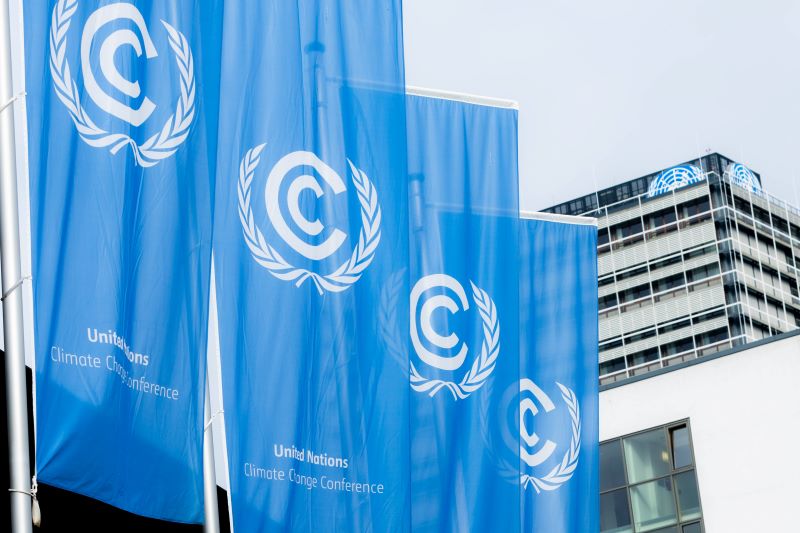Angela Churie Kallhauge is the Executive Vice President for Impact at Environmental Defense Fund, and the former head of the World Bank’s Carbon Pricing Leadership Coalition Secretariat.
With climate negotiators gathered at mid-year UN talks in Bonn, Germany, to prepare for COP29, a critical question hangs in the air: how can we ensure that the money mobilized to address the climate crisis is not only sufficient in quantity, but also effective in quality?
Negotiators have been tasked to set a new collective quantified goal, or NCQG, on climate finance, which rapidly scales the amount of money we need globally for climate action. In the face of stark needs, the NCQG must be ambitious.
Experts estimate that by 2030, $2.4 trillion will be required annually to support the needs of developing countries alone.
“Great enabler of climate action” – UN urges Bonn progress on new finance goal
With just five months before the goal is on the decision-making table at COP29, it is also critical that negotiators consider the issue of quality – such as the type of financing, the ways money is accessed, alignment with national priorities, the predictability of funds, and their impact.
High-quality climate finance should not create additional burdens and has clear pathways to access for countries and communities in need. However, many developing countries have expressed concern that the current quality of finance is far from where it needs to be.
Concessional and accessible
An important signal of quality in climate finance is the degree of concessionality – or how favorable the terms of financing are. Concessional finance includes grants and loans with low interest rates and longer repayment periods, which are easier for recipient countries to manage.
Concessional tools also have potential to scale action by mobilizing private finance. These ‘blended finance’ approaches can often do far more than a traditional grant or loan. For example, to build a solar plant in Uzbekistan, the World Bank utilized concessional loans to mitigate financial risk and incentivize private-sector participation.
However, in recent years, more than 70% of public climate finance has been delivered through loans, most of which have been non-concessional. This poses a challenge as many developing countries face burgeoning debt crises, and non-concessional loans risk further indebting these vulnerable states.
Yet, countries in debt distress like Ghana and Zambia still received 17% of their climate finance through loans in 2021. Without proper concessionality, climate finance meant to build resilience can paradoxically make things worse.
Rich nations meet $100bn climate finance goal – two years late
Another measure of quality is the accessibility of finance. Increased climate finance must come with clear channels of access for developing countries, but bureaucratic hurdles, limited transparency, and rigid funding terms can hinder governments from accessing international funding streams.
For example, small island states have struggled to access resources from climate funds due to capacity constraints in navigating the finance landscape. Access to private finance is also lacking as private funders perceive high risks of investing in emerging markets. If climate finance flows remain unavailable or inaccessible to developing countries, it will be impossible to meaningfully address their needs and priorities.
Multi-layered goal
The structure of the NCQG can incorporate elements of impact, concessionality and access. Negotiators should pursue a goal with multiple layers – setting a support target for providing public finance to developing countries, alongside an investment target for mobilizing all sources of finance globally.
The support goal should be underpinned by concessional finance, targeting the national priorities of developing countries through grant and other non-debt financial instruments fit for purpose. These layers can foster blended approaches that scale available finance and enable greater access without creating new debt burdens.
Lastly, for public finance to more effectively open new channels of access, we need steady reform in the broader financial system, including the multilateral development banks (MDBs). The MDBs are undertaking reforms to simplify access and increase lending capacity, and made new announcements at the World Bank’s Spring Meetings in April, which will allow public financing from MDBs to catalyze greater private finance flows and mitigate risks of debt distress.
Pairing quantitative and qualitative elements should be at the top of the agenda in Bonn. Many countries have already called for qualitative elements to be incorporated into the goal. Now, delivering this quality – via greater concessionality, accessibility, and innovation – will be vital to ensure that climate finance can play a transformative role in addressing the complex challenges posed by climate change.
